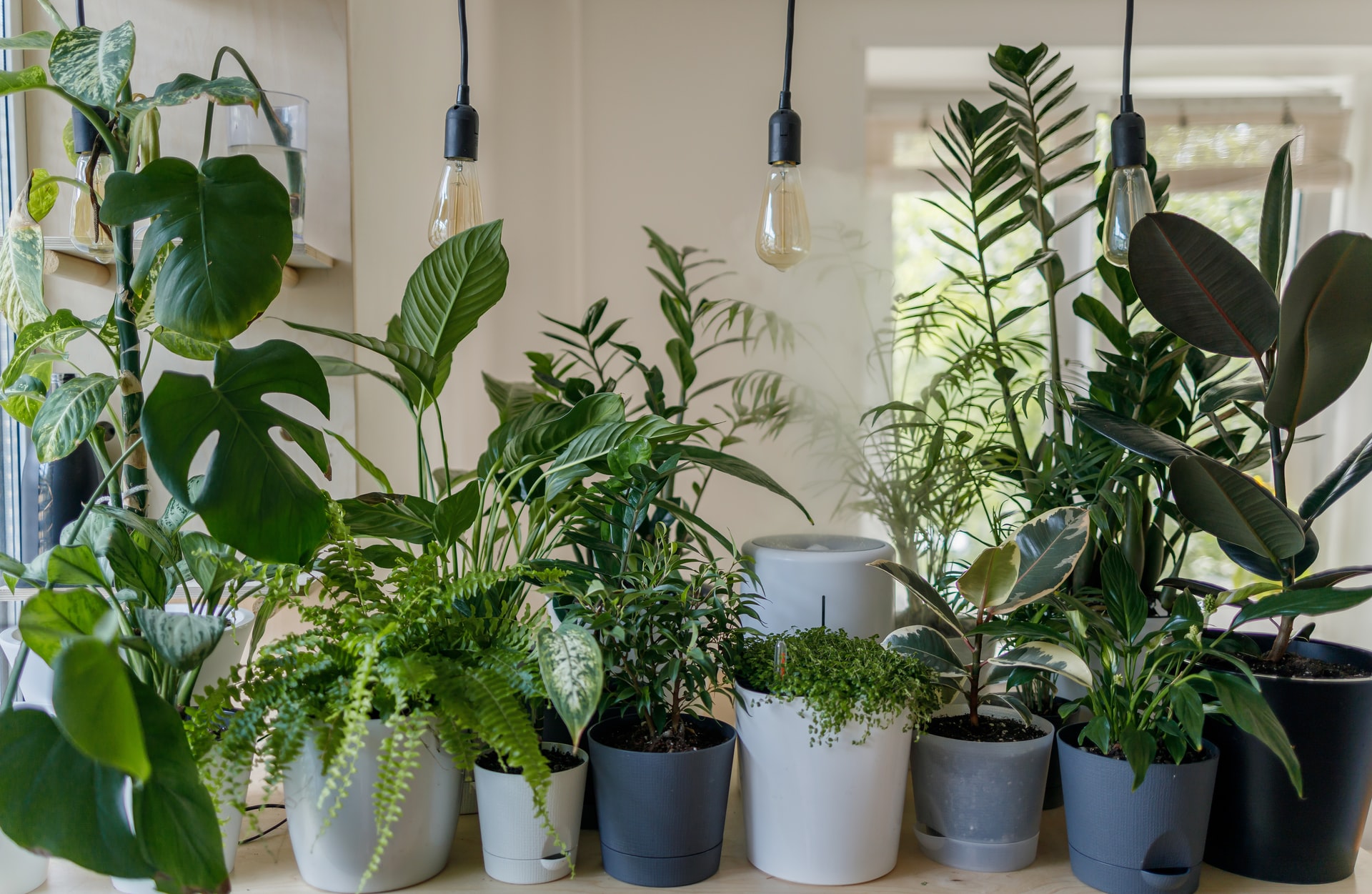Before we begin, we have to address the elephant in the room. Yes, you can still kill these ‘impossible to kill house plants.’ However, you don’t necessarily need the greenest thumb to keep them alive, either.
Not all plants require constant love and affection to flourish. Low maintenance indoor plants exist that even the most novice gardeners couldn’t kill.
If you’re hunting for easy indoor plants to add to your home, check out our list of the best indoor plants that are impossible to kill.
Things to look for in hard-to-kill house plants
If you’re hunting for house plants that are impossible to kill, there are four essential factors you need to consider when selecting the best indoor plants:
- Do they thrive in low light or indirect lighting conditions?
- Does it enjoy room temperature and household humidity?
- Does it grow well in standard potting soil?
- Will it survive prolonged periods of neglect?
If you’ve answered yes to most, if not all, of these questions, you’re probably looking at a pretty resilient houseplant.
Low Light Indoor Plants: Pothos (Epipremnum aureum)
Also known as the devil’s vine or devil’s ivy for its ability to withstand near pitch-black conditions, Pothos is, without a doubt, one of the easiest houseplants to keep alive. Boasting heart-shaped leaves, this trailing plant produces a variety of colours, including yellow, white and, of course, plenty of green.
As its nicknames suggest, healthy vines can grow to a whopping thirty feet in length or just under ten metres. Fortunately, you can trim its leaves back to whatever length you desire without harming your pothos. And you can use your cuttings to propagate your Pothos, should you desire a second batch. Just pop it in some water until they start growing roots before repotting.
Be aware, however, that the Pothos plant is toxic to both cats and dogs. So unless you plan on hanging your Devil’s Ivy beyond the reach of your pets, it might be best to avoid growing Pothos for the sake of your furry friends.
Care tip: when the temperature increases during summer, so should your watering schedule. Just remember not to soak the soil. Give your pothos a light splash of water to keep them happy in the heat. Pothos is a low light indoor plant that requires little to no light and even survives under artificial light.
Low Maintenace Indoor Plants: Aloe (Aloe barbadensis)
Probably one of the most well-known succulents, especially for its beauty and health uses, aloe vera plants are not only beautiful, but they’re also effortless to grow too. Blooming from a central cluster, aloe vera plants grows upwards and outwards with tall stiff leaves filled with soothing aloe vera gel.
Care tip: Make sure the soil dries entirely in between watering. Avoid overwatering aloe vera. Keep them nearby a sunny window for bright but indirect sunlight.
Easy Indoor Plants: Peace Lily (Spathiphyllum wallisii)
With a name like Peace Lily, it’s no wonder they’re one of the most beloved indoor house plants. Low maintenance and easy to grow, these stunning plants come in various sizes, with the largest Peace Lillies growing as tall as four feet. Adored for their deep green plumage and admired for its gorgeous white flowers, Peace Lillies are a delightful addition to any household.
Care tip: Keep them in bright but indirect sunlight. Peace Lillies will stop blooming if they’re not getting enough light. Use a pebble tray with water under the plant to increase humidity. And if the leaves start to droop, that means it’s time for a drink.
Drought Tolerant Indoor Plants: African Milk Tree (Euphorbia Trigona)
It’s not a cactus. The African Milk Tree, native to Central Africa, is actually a succulent plant. Grown to create hedges, African Milk Tree’s are often referred to as the good luck cactus thanks to its rapid and enthusiastic growth. Other folk names include candelabra cactus, cathedral cactus, or friendship cactus.
Growing at a rate of 1-2 feet every year, the African Milk Tree can reach a total height of 8 feet or about 2.4 metres, with lush and green at its base and a lighter green for new growth. However, because they grow so tall, they can be toppled over. If you plan on growing one indoors, prune them regularly, and keep them away from thoroughfares to avoid disaster.
Care tip: the African Milk Tree is highly drought tolerant and requires only moderate watering once a week. You should ensure the soil is dry before rewatering. Place them in indirect but bright sunlight.
Popular Indoor Plants: Fiddle Leaf Fig (Ficus Lyrata)
Depending on who you talk to, the Fiddle Leaf Fig is either a delight to grow or a fickle plant with more needs than a toddler. We’re inclined to give the Fiddle Leaf a chance here, mainly because of their popularity. Adored for their large leathery leaves, these gorgeous house plants can grow upwards of two-metres tall, adding a whole bunch of green to your home.
Care tip: While you should keep your Fiddle Leaf Fig away from direct sunlight, it still needs a bunch of light during the day. Ensure its leaves are dust-free to help it soak up the sunshine. Plus, a Fiddle Leaf only needs a drink if the top inch of soil begins to dry out.
Relocating House Plants Smoothly
Moving your belongings and furniture is one thing. Moving house with plants is a whole other ball game. While these plants might be able to resist neglect, having pots bumping around in the back of your car is a sure-fire way to damage your impossible to kill house plants. If you’re looking for a moving house service, be sure to check out Smoothmoves!








